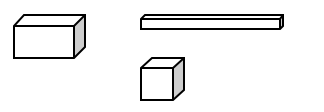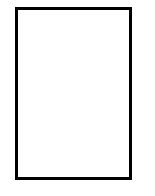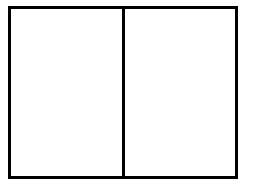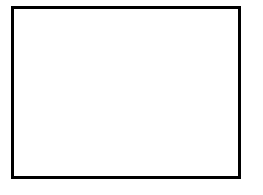Skip over navigation
Well, we're often wrapping up presents - I find that many of them arrive in boxes that are cuboid. Remember those? A cuboid has 6 faces; each face a rectangle (including squares); each face paired with one the same on the opposite side and all the angles 90 degrees. So they might look like these:

Now let's talk about the wrapping paper. You are probably used to using A4 paper for all kinds of things. A4 paper looks a bit like this:

But two A4s together make A3:

So we have:

Which could look better as:

Now for easiness we'll approximate the size of the A3 sheet to 40cm by 30cm.
The wrapping paper we'll be using is A3-size, like the picture above.
So, we're wrapping up a cuboid in this A3 wrapping paper.
The challenge is to find the largest cuboid that can be covered completely with the A3 sheet - you will probably want to stick to whole numbers of centimetres!
Rather than wrapping the cuboid like we might do a birthday present, let's think about it as if we're trying to have as little overlap as possible.
You might do this practically or you may use diagrams or even a spreadsheet - it is up to you.


Or search by topic
Number and algebra
Geometry and measure
Probability and statistics
Working mathematically
Advanced mathematics
For younger learners
All Wrapped Up
Age 7 to 11
Challenge Level 





Well, we're often wrapping up presents - I find that many of them arrive in boxes that are cuboid. Remember those? A cuboid has 6 faces; each face a rectangle (including squares); each face paired with one the same on the opposite side and all the angles 90 degrees. So they might look like these:

Now let's talk about the wrapping paper. You are probably used to using A4 paper for all kinds of things. A4 paper looks a bit like this:

But two A4s together make A3:

So we have:

Which could look better as:

Now for easiness we'll approximate the size of the A3 sheet to 40cm by 30cm.
The wrapping paper we'll be using is A3-size, like the picture above.
So, we're wrapping up a cuboid in this A3 wrapping paper.
The challenge is to find the largest cuboid that can be covered completely with the A3 sheet - you will probably want to stick to whole numbers of centimetres!
Rather than wrapping the cuboid like we might do a birthday present, let's think about it as if we're trying to have as little overlap as possible.
You might do this practically or you may use diagrams or even a spreadsheet - it is up to you.
You may also like
The Big Cheese
Investigate the area of 'slices' cut off this cube of cheese. What would happen if you had different-sized block of cheese to start with?
Wrapping Presents
Choose a box and work out the smallest rectangle of paper needed to wrap it so that it is completely covered.

